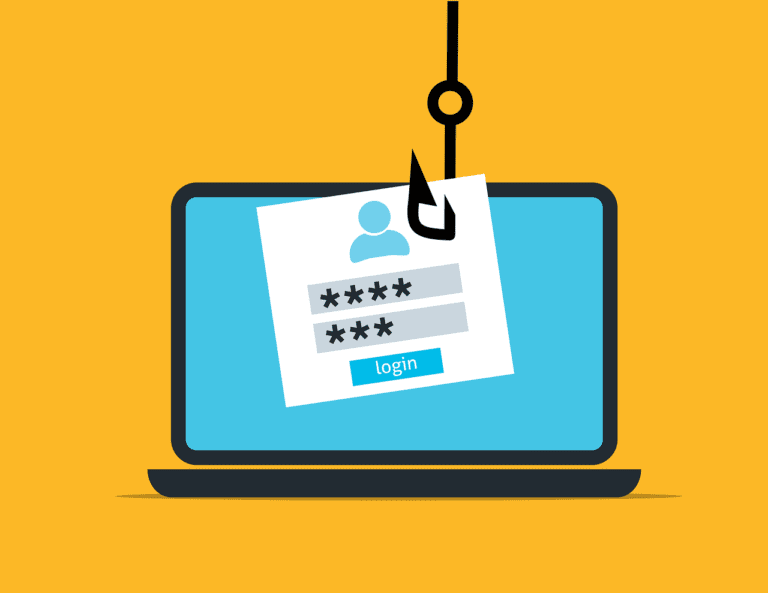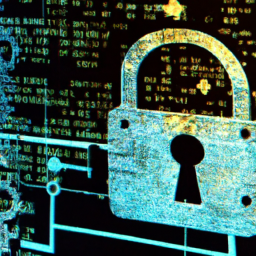How Can Organizations Ensure Supply Chain Security?
In today’s interconnected world, organizations face the constant challenge of protecting their supply chain from various security threats. From cyberattacks to physical breaches, ensuring the safety and integrity of the supply chain is crucial for business continuity and customer trust. This article explores some effective strategies that organizations can employ to safeguard their supply chain, highlighting the importance of collaboration, risk assessment, and advanced technologies in mitigating potential risks. So, whether you are a large corporation or a small business, read on to discover practical measures that can help you enhance supply chain security and stay one step ahead of potential threats.
Implementing Strong Cybersecurity Measures
In today’s digital age, strong cybersecurity measures are crucial for organizations to protect their supply chain from cyber threats. Enforcing strict access controls is an essential step in preventing unauthorized individuals from gaining access to sensitive information. By implementing user authentication methods such as passwords, biometrics, and multi-factor authentication, organizations can ensure that only authorized personnel can access critical systems and data.
To further enhance cybersecurity, it is vital for organizations to regularly update and patch their systems. Cybercriminals are constantly evolving their tactics, and software vulnerabilities can be exploited if not addressed promptly. By staying up-to-date with the latest security patches and frequently updating hardware and software, organizations can minimize the risk of cyber attacks.
Another crucial aspect of protecting the supply chain is conducting vulnerability assessments. These assessments involve identifying potential weaknesses and vulnerabilities in the organization’s systems and infrastructure. By regularly performing vulnerability assessments, organizations can proactively mitigate any identified risks and ensure that their supply chain remains secure.
Establishing Reliable Supplier Relationships
Ensuring supply chain security requires establishing reliable supplier relationships. To achieve this, organizations must conduct thorough supplier vettings. It is essential to evaluate potential suppliers’ security practices, including their information security policies, data handling procedures, and incident response capabilities. By conducting comprehensive vetting processes, organizations can select suppliers who prioritize security and align with their own cybersecurity standards.
Implementing clear supplier security requirements is another critical step. By clearly outlining the security expectations and standards that suppliers must meet, organizations can ensure that all parties involved in the supply chain are aligned in terms of security measures. These requirements may include specific technological safeguards, data protection protocols, and compliance with industry-specific regulations.
Regularly auditing supplier security practices is an effective way to monitor and maintain the security of the supply chain. By conducting periodic audits, organizations can verify that suppliers are adhering to the agreed-upon security requirements and identify any potential gaps or weaknesses in their security processes. Additionally, establishing effective communication channels with suppliers allows for prompt information sharing and issue resolution, further enhancing the security of the entire supply chain.
Ensuring Physical Security
While cybersecurity is paramount for supply chain security, organizations must also address physical security concerns. Implementing access control measures, such as secure entry systems and employee identification badges, can prevent unauthorized access to facilities and sensitive areas. These measures ensure that only authorized personnel can enter restricted areas and handle critical assets.
Securing warehouses and storage facilities is another crucial aspect of physical security. Implementing robust perimeter security, including fences, gates, and security guards, helps prevent unauthorized access to storage areas and deters potential intruders. Additionally, organizations can utilize secure locking mechanisms and surveillance systems to further enhance the security of their physical storage areas.
Implementing video surveillance systems is an effective way to monitor and record activities within the supply chain facilities. By having cameras strategically placed throughout the premises, organizations can deter theft, monitor employee activities, and gather evidence in case of security incidents. Video surveillance systems serve as a deterrent and provide valuable documentation for investigations and risk assessment purposes.
Establishing backup and disaster recovery plans is crucial to ensure that physical security incidents do not disrupt the supply chain operations. By regularly backing up critical data and having plans in place to quickly recover from natural disasters, accidents, or other unforeseen events, organizations can minimize the impact on their supply chain and ensure business continuity.
Securing Transportation and Logistics
Securing transportation and logistics play a vital role in ensuring the overall security of the supply chain. Using secure packaging and sealing methods is one way to protect goods during transportation. Tamper-evident packaging and seals can help identify any unauthorized access or tampering attempts, ensuring the integrity of the goods throughout the transportation process.
Implementing GPS tracking systems allows organizations to monitor the location, route, and status of shipments in real-time. This proactive approach enables organizations to respond quickly to any deviations from the planned route or unexpected delays, increasing the chances of preventing or minimizing potential security incidents. GPS tracking systems also provide valuable data for supply chain optimization and efficiency improvements.
Conducting regular vehicle inspections is crucial to identify any potential security vulnerabilities. Inspections should encompass not only the physical condition of the vehicle but also checks for any unauthorized modifications, hidden compartments, or tampering indicators. By maintaining a robust inspection process, organizations can ensure that vehicles used in the supply chain are secure and minimize the risk of unauthorized access to goods.
Verifying the credentials of transportation providers is essential to ensure that the selected partners prioritize security. Conducting background checks, verifying licenses and certifications, and reviewing their security protocols are vital steps in establishing trust with transportation providers. It is crucial to choose partners who align with the organization’s security standards and are committed to maintaining the security of the supply chain.
Implementing Supply Chain Risk Management
Implementing supply chain risk management is a proactive approach that allows organizations to identify potential risks and vulnerabilities before they can cause significant disruptions. By conducting thorough risk assessments, organizations can identify potential threats such as cybersecurity risks, natural disasters, political instability, and supplier disruptions.
Developing contingency plans is a crucial step in supply chain risk management. These plans should outline the steps to be taken in case of identified risks or disruptions and provide clear guidelines for mitigating the impact on the supply chain. Contingency plans should include alternative sourcing strategies, backup manufacturers, and backup logistics providers to maintain operations in the event of a disruption.
Regularly assessing and monitoring risks is essential to keep the supply chain secure. Risk assessments should be conducted periodically or whenever significant changes occur in the supply chain. By continuously monitoring risks, organizations can adapt their strategies, allocate resources appropriately, and implement necessary risk mitigation measures. This proactive approach allows organizations to maintain an agile and secure supply chain.
Establishing business continuity plans is another essential component of supply chain risk management. These plans outline the steps to be taken to ensure that critical operations can continue during and after a disruption. Business continuity plans may include backup systems, redundant infrastructure, alternative work arrangements, and communication protocols to enable seamless operations during challenging times.
Ensuring Data and Information Security
Data and information security are of utmost importance in today’s digitized supply chain landscape. Encrypting sensitive data is a vital step in protecting it from unauthorized access. Encryption converts the data into an unreadable format, and only those with the appropriate encryption keys can decrypt and access the data. By implementing robust encryption protocols, organizations can ensure that sensitive information remains secure throughout the supply chain.
Implementing robust data backup procedures is essential to safeguard against data loss or corruption. Regularly backing up critical data and storing it in secure and off-site locations protects against data breaches, natural disasters, and hardware failures. It is crucial to have well-defined backup procedures in place to ensure quick data recovery and minimize any potential interruptions to the supply chain.
Establishing data access controls is another crucial aspect of data security. By implementing role-based access controls, organizations can restrict access to sensitive information based on job roles and responsibilities. This ensures that only authorized individuals can access and modify critical data, reducing the risk of unauthorized disclosure or manipulation.
Conducting regular security trainings for employees is an effective way to enhance data and information security awareness. Training sessions should cover best practices for handling sensitive information, identifying and reporting security incidents, and understanding the consequences of security breaches. By educating employees about their role in maintaining data security, organizations can significantly reduce the likelihood of human errors or intentional misconduct.
Building Resilience and Redundancy
Building resilience and redundancy into the supply chain is crucial to ensure the ability to respond to unforeseen disruptions. Diversifying supplier and vendor networks reduces the reliance on a single source and minimizes the impact if one supplier faces a disruption. By having multiple suppliers for critical components or materials, organizations can maintain a steady supply even during supplier disruptions.
Implementing redundant systems is another way to enhance the resilience of the supply chain. Redundancy involves creating backup systems or processes that can be activated in case of primary system failure. For example, having backup power generators or duplicate manufacturing lines ensures that operations can continue even in the event of a power outage or equipment failure.
Maintaining sufficient inventory levels is essential to mitigate the impact of disruptions on the supply chain. By carefully managing inventory levels, organizations can respond to unexpected disruptions without significant delays or shortages. Having buffer stocks and safety stock ensures that there is an adequate supply to meet demand during times of increased uncertainty or disruptions.
Establishing emergency response plans is key to enabling a swift and coordinated response to unforeseen events. These plans should outline the steps to be taken, roles and responsibilities, and communication protocols during a crisis. By having well-defined emergency response plans, organizations can minimize the impact of disruptions and ensure a timely recovery of the supply chain.
Engaging in Continuous Monitoring and Evaluation
To stay ahead of evolving threats and ensure the effectiveness of security measures, organizations must engage in continuous monitoring and evaluation. Implementing real-time monitoring systems allows for proactive identification and response to security incidents. These systems can detect and alert organizations about any suspicious activities or anomalies, enabling prompt action to mitigate potential risks.
Regularly reviewing and updating security policies is crucial to address emerging threats and new vulnerabilities. Security policies should be comprehensive, clearly communicated to all employees, and regularly reviewed to ensure their relevance and effectiveness. By staying up-to-date with the latest security practices, organizations can continuously adapt their security measures to protect the supply chain from emerging threats.
Conducting internal and external audits is an important practice to assess the effectiveness of security measures. Internal audits involve reviewing and evaluating the organization’s own security practices and procedures. External audits, on the other hand, are conducted by independent third parties to provide an unbiased assessment of the organization’s security posture. These audits help identify any gaps or weaknesses in security and provide recommendations for improvement.
Engaging in incident response planning allows organizations to be prepared to respond effectively to security incidents. Incident response plans outline the steps to be taken in the event of a security breach or other incidents. By establishing clear roles, responsibilities, and communication channels, organizations can minimize the impact of incidents and ensure a swift and coordinated response.
Collaborating and Sharing Information
In an increasingly interconnected world, collaboration and information sharing are vital for enhancing supply chain security. Participating in industry information sharing initiatives allows organizations to stay abreast of emerging threats, vulnerabilities, and best practices. These initiatives foster collaboration among organizations, enabling the exchange of valuable knowledge and insights to collectively enhance supply chain security.
Establishing partnerships with government agencies can provide organizations with access to valuable resources and expertise in supply chain security. Governments often have specialized agencies and programs dedicated to protecting critical infrastructure and the supply chain. By partnering with these agencies, organizations can benefit from their intelligence, guidance, and support in implementing robust security measures.
Sharing best practices with peers is another effective way to enhance supply chain security. Industry conferences, forums, and networking events provide opportunities for organizations to learn from one another’s experiences, success stories, and lessons learned. By engaging in open and collaborative discussions, organizations can gain valuable insights and identify areas for improvement in their own security practices.
Participating in threat intelligence networks allows organizations to access real-time information on evolving threats and vulnerabilities. These networks pool together information from various sources, including government agencies, private companies, and security researchers, to provide a comprehensive view of the threat landscape. By actively participating in these networks, organizations can enhance their ability to detect, prevent, and respond to emerging threats.
Ensuring Compliance with Regulations and Standards
Compliance with regulations and standards is a critical aspect of supply chain security. Staying up-to-date with relevant regulations and industry standards ensures that organizations adhere to the necessary security requirements. It is essential to regularly review and understand the regulations applicable to the organization’s industry and geographical locations to ensure compliance.
Implementing industry best practices goes beyond mere compliance and ensures that organizations adopt the most effective security measures available. Best practices are often developed by industry associations or security experts and represent a consensus on the most effective ways to mitigate supply chain security risks. By benchmarking against these best practices, organizations can continuously improve their security posture and protect the supply chain.
Obtaining certifications and accreditations validates an organization’s commitment to maintaining high standards of supply chain security. Certifications such as ISO 27001 for information security management and ISO 28000 for supply chain security management provide independent verification of an organization’s compliance with international standards. Accreditation bodies assess and certify organizations’ adherence to these standards, boosting confidence and trust in the organization’s security practices.
Conducting regular compliance assessments ensures that the organization’s security measures align with the applicable regulations and standards. Compliance assessments typically involve audits, evaluations, and documentation reviews to verify that the organization’s practices, processes, and systems meet the required standards. By conducting regular compliance assessments, organizations can identify any gaps or weaknesses and take corrective actions to ensure continued compliance.
In conclusion, ensuring supply chain security requires a comprehensive approach that encompasses various aspects of organizational practices. By implementing strong cybersecurity measures, establishing reliable supplier relationships, emphasizing physical security, securing transportation and logistics, implementing supply chain risk management, ensuring data and information security, building resilience and redundancy, engaging in continuous monitoring and evaluation, collaborating and sharing information, and ensuring compliance with regulations and standards, organizations can safeguard their supply chain from potential threats and disruptions. By prioritizing supply chain security and adopting robust practices, organizations can protect their assets, maintain customer trust, and ensure the smooth functioning of their operations.








